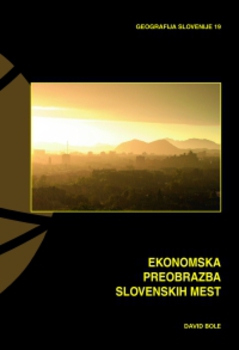Ekonomska preobrazba slovenskih mest
Monografija je pregled aktualnega dogajanja v slovenskih mestih in vpliva na vsakodnevno življenje. Izhaja iz sodobnih konceptov, kot so globalizacija, postfordistična proizvodnja, pomen ustvarjalnosti in inovativnosti. S temi koncepti skuša razložiti in tolmačiti spremembe v urbanem sistemu in zgradbi mest. Slovenska mesta so se v povprečju terciarizirala, zlasti so postale pomembne tržne storitve. Del slovenskih mest je še vedno »na prehodu« med industrijsko in postindustrijsko fazo. Nekatera mesta ne zmorejo priti na storitveno stopnjo in se soočajo z brezposelnostjo, nekatera imajo bolj neofordističen značaj. Nekatera regionalna središča bodo najverjetneje sledila Ljubljani, ki izkazuje najvišjo stopnjo preobrazbe. Slovenska mesta so del globalne mreže in doživljajo podobne spremembe kot druga mesta in urbani sistemi po svetu.
Prenosi

Zbirka
Licenca

To delo je licencirano pod Creative Commons Priznanje avtorstva-Nekomercialno-Brez predelav 4.0 mednarodno licenco.
